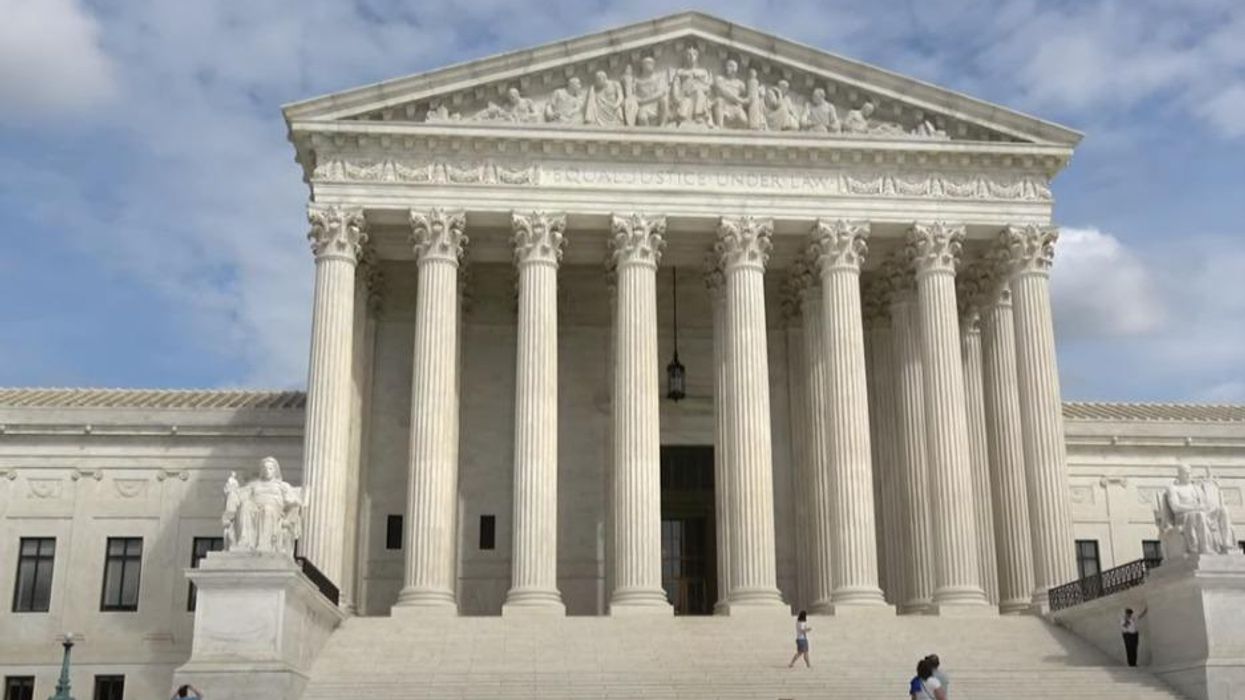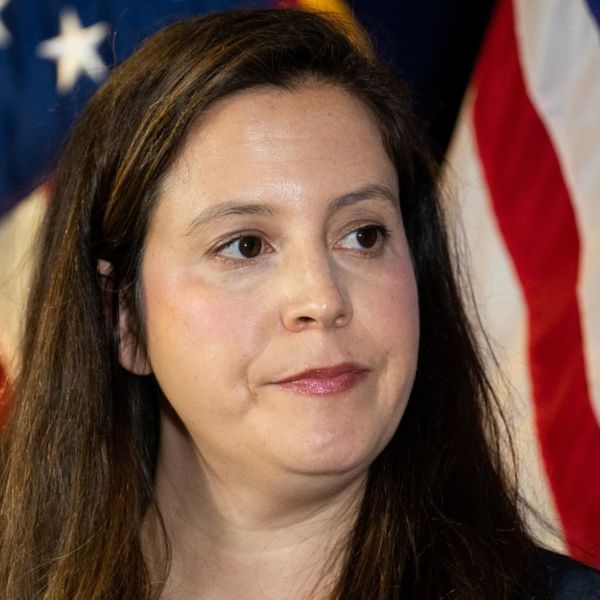The Supreme Court Cruelly Condemns Trans Kids (And Families) To Suffering
The US Supreme Court just told American parents in red states that if they have a transgender child or teen, they have no right to make the best health care decisions for them.
Lawmakers in 27 Republican-controlled state legislatures have enacted bans on gender-affirming care for transgender youth, despite the fact that the American Academy of Pediatrics and numerous other major medical associations and world health authorities recommend this care. On June 18, the US Supreme Court gave these states the green light to enforce those prejudicial bans by upholding Tennessee’s law in the US v. Skrmetti case.
Samantha Williams, the heartbroken mom of one of the three transgender teenagers whose families challenged Tennessee’s ban, is devastated by the ruling. She called out the six conservative justices for being unmoved by her “heartfelt plea” to let parents, in consultation with medical experts, decide what treatment is best for their trans child.
“Let us do our job as parents. Let us love and care for our daughter in the best way we and our doctors know how,” she wrote in a brave op-ed in the New York Times on June 19.
But her pleas fell on deaf ears.
Instead, the six right-wing justices took a sledgehammer once again to the right to privacy and the liberty of individuals to make their own decisions about their bodies. Their ruling upholding Tennessee’s ban on gender-affirming care for transgender minors will now apply to every state with a similar ban.
This same Supreme Court erased a Constitutionally protected right for the first time in 2022, when these same six justices overturned Roe v. Wade and robbed American women of their 50-year right to decide whether and when to have children. Now, the John Roberts Court has snatched rights away from another group—trans teenagers and their supportive parents—to exercise personal liberty.
As the mother of a trans daughter—who, fortunately, is not a minor—I can’t help but feel the pain of these parents who love their children like you and I do, all the way “to the moon and back again.”
It’s terrifying that the Supreme Court and Republican lawmakers have turned into world-class busybodies, no different from the morality police in Iran who check that every Iranian woman is covering her hair (or else!), or the Taliban in Afghanistan, who have taken the rights to an education and to work outside the home away from the oppressed women of their country.
The American Taliban
Yes, we have a whole party and their carefully selected Supreme Court justices running their own morality squads, imposing their right-wing religious extremist beliefs over all 340 million of us.
From the party that says they hate “big government” and any interference in individual rights, we have lawmakers and Supreme Court justices poking their noses right up into women’s uteruses to “protect fertilized eggs”—and now they’re obsessed with examining and ruling on genitals under the guise of “protecting” young people from their parents and doctors.
Are you kidding me?
Unfortunately, no. The hypocrisy is breathtaking.
Republicans have spent the past several years championing “parental rights”—the right to object to books, vaccines, and school policies. Yet, when a loving parent listens to a child who trusts them enough to share that they are trans, and wants to help them express themselves, those same lawmakers deny them the right to do so. In these states, and now with the Supreme Court’s blessing, parents are told what they cannot do for their children.
It’s especially hypocritical given that Republicans have long accused Democrats of running an intrusive “nanny state.” Yet they are now the ones interfering in the most personal family and medical decisions. They’ve classified paid family leave, unpaid leave to attend children’s events, tax breaks to pay for childcare, and even the minimum wage “nanny legislation.”
Meanwhile, justices Clarence Thomas and Samuel Alito accept massive gifts, like a $267,000 luxury RV, lavish yacht vacations, free homes, and college tuition from their own billionaire benefactors, while they insert their invasive rulings into our private lives.
The problem with busybody red state lawmakers is the cruelty they impose. Gender-affirming care is supported by every major medical pediatric and psychological association in the US, including the American Academy of Family Physicians. It’s evidence-based and essential for innocent trans teens who don’t want to be forced into living with the adult sex organs of a gender they don’t identify with.
As a mom who has listened to her own trans daughter, I admit that I have a heightened awareness of the heavy depression that a trans person feels when they are unable to even look in the mirror at a body that feels like a prison to them. But that’s where gender affirming care comes in. It covers everything from counseling by trained therapists to the provision of puberty blocker medications that delay the onset of adult gender characteristics during puberty. Puberty blockers are reversible, hormone therapy is rare, and surgery on minors is extremely rare. And all of this is done by experienced physicians and with the approval of a trans teen’s parents.
The myth that children are being “mutilated” is false. No parent has ever sent their child to school one day and seen them come home as a different gender. Genital surgeries for minors are exceedingly rare and are not part of standard gender-affirming care for youth. In fact, the most common “gender-affirming” surgery performed on minors in the US is chest reduction surgery for cisgender male youth—not transgender youth. The surgery is performed to treat gynecomastia, a condition where cisgender boys develop excess breast tissue during puberty.
Any news you are seeing about “mutilating” children is solely designed to sow outrage and increase media ratings.
Impact of the Ruling
Despite the constitutional guarantees that are supposed to protect every American equally under the law, the Supreme Court has decided that one special group—trans youths, who account for just 300,000 or 1.4 percent of all American teens aged 13-17—get to have their right to health care decisions obliterated, even when those decisions are made with their adult parents.
The majority in the court writes that it has thrown the decision about access to gender-affirming care for minors back to “the people, their elected representatives and the democratic process.” In other words, they are leaving the decision about whether to pass laws banning gender-affirming care in the hands of the states. However, the reality is that Republican-dominated states have become Republican-controlled through aggressive gerrymandering and voter suppression, ensuring that “the people” don’t get to democratically resolve anything.
The result is that real kids are punished, as Tennessee plaintiff Samantha Williams pointed out in her op-ed.
Her daughter, L.W., came out just before she turned 14, and four years later she is “thriving, healthy and happy after pursuing evidence-based gender-affirming care.”
“But the very care that is improving her life became a primary political target of the Republican supermajority in our home state, Tennessee.”
So how does it affect the Court and Republican state lawmakers anyway, if loving parents provide the health care—approved by 30 respected medical associations—that allows their children to live the full lives in the gender-aligned bodies that they are comfortable with?
Here’s how: Republicans and President Donald Trump have found a small, defenseless minority they can use to distract voters from getting involved with other issues that Republicans want to handle without voter input—such as wages, housing, and health care.
Parents Love Their Trans Kids
I have interviewed multiple parents of trans kids living in red states for stories I’ve written over the years. Like Samantha Williams and the other plaintiffs in US v. Skrmetti, they have done everything they can to protect their children from the “capricious, narrow-minded attacks” of their own state governments.
Their situation has only been made more emotionally and financially dire by the Court’s ruling. They will have to travel long distances regularly or move to blue states so their children can still receive the health care they need.
Put yourself in their shoes. This is no different from you potentially having to travel or move to another city or state for your child to receive vital treatment for cancer. You would do that. In both cases, the care is life saving.
“Data indicate that 82% of transgender individuals have considered killing themselves and 40% have attempted suicide, with suicidality highest among transgender youth,” reports the National Library of Medicine.
No matter what state they live in, trans kids are faced with a hostile national environment, in which our current president has made it his mission to distract his base by bullying trans people of every age, banning them from military service, from participating in school sports, from using bathrooms aligned with their gender identity, and from obtaining passports under their new names and identities.
Trump has even gone so far as to declare in an executive order that in the US there are only two biological sexes from birth: “These sexes are not changeable and are grounded in fundamental and incontrovertible reality,” his order states.
The science behind the statement is laughable, considering 0.2 percent to 0.5 percent—or 1 in 1,000 to 4,000—babies are born with ambiguous genitalia which don’t align with typically male or female external genitals.
Sorry, lawmakers in Tennessee and other red states: Nature just doesn’t support your culture war issue.
As liberal Justice Sonia Sotomayor pointed out in her emphatic dissent: “The court abandons transgender children and their families to political whims.”
Like Sotomayor…. “In sadness, I dissent.”
Bonnie Fuller is the former CEO and editor-in-chief of HollywoodLife.com & former editor-in-chief of Glamour, Cosmopolitan, Marie Claire and USWeekly. She is now writing about reproductive freedom and politics.
Reprinted with permission from Courier Newsroom.









